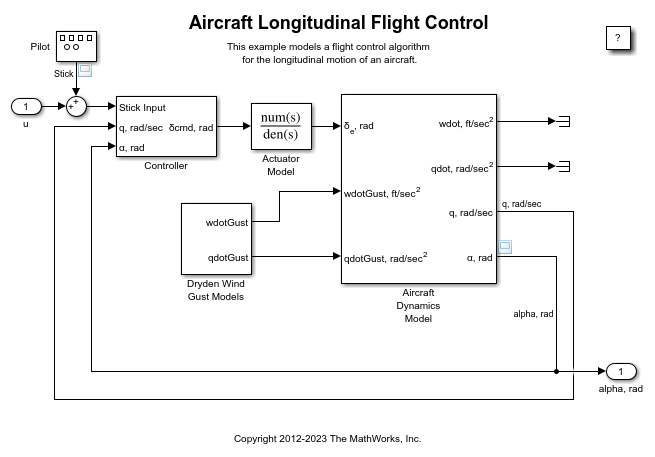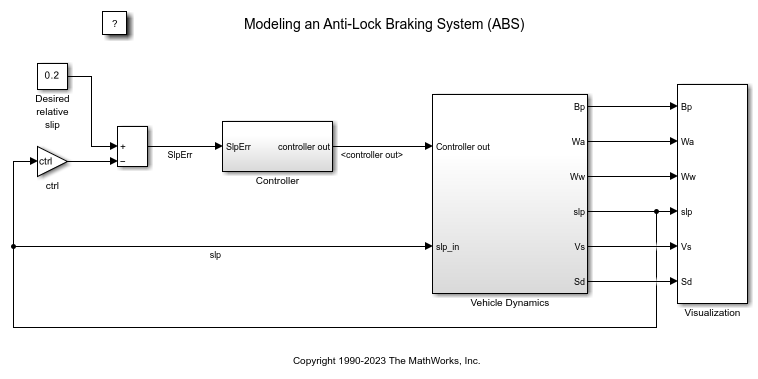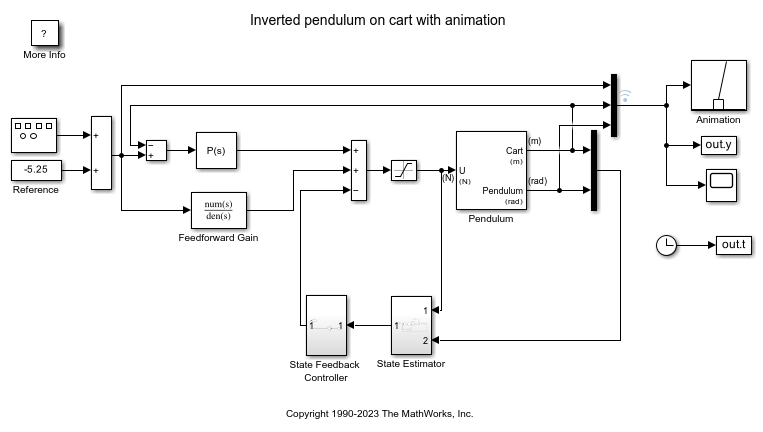Transfer Fcn
将线性系统建模为传递函数
库:
Simulink /
Continuous
描述
Transfer Fcn 模块通过拉普拉斯域变量 s 的传递函数为线性系统建模。此模块可为单输入单输出 (SISO) 和单输入多输出 (SIMO) 系统建模。
使用此模块的条件
Transfer Fcn 模块假定满足以下条件:
传递函数的格式为
其中 u 和 y 分别代表系统输入和输出,nn 和 nd 分别是分子和分母系数。num(s) 和 den(s) 包含分子和分母的 s 降幂系数。
分母的阶必须大于或等于分子的阶。
对于多输出系统,所有传递函数具有相同的分母,而所有分子具有相同的阶次。
为单输出系统建模
对于单输出系统,模块的输入和输出是标量时域信号。要为此系统建模,请执行以下操作:
在分子系数字段中输入传递函数的分子系数向量。
在分母系数字段中输入传递函数的分母系数向量。
为多输出系统建模
对于多输出系统,模块输入为标量,输出为向量,其中每个元素都是系统的一个输出。要为此系统建模,请执行以下操作:
在分子系数字段中输入矩阵。
此矩阵的每一行包含确定一个模块输出的传递函数的分子系数。
在分母系数字段中输入系统所有传递函数的公分母系数向量。
指定初始条件
传递函数描述了输入和输出在拉普拉斯(频率)域中的关系。具体而言,它被定义为零初始条件的系统对冲激输入的响应(输出)的拉普拉斯变换。
传递函数的乘法和除法等运算依赖于零初始状态。例如,您可以将一个复杂的传递函数分解为一系列简单的传递函数。按顺序应用它们可获得与原始传递函数相同的响应。如果其中一个传递函数采用非零初始状态,结果将不正确。而且,一个传递函数有无限多个时域实现,大多数状态并没有任何物理意义。
由于这些原因,Simulink® 将 Transfer Fcn 模块的初始条件预设为零。要指定给定传递函数的初始条件,请使用 tf2ss 将传递函数转换为可控制的典型状态空间实现。然后,使用 State-Space 模块。tf2ss 实用工具为系统提供了 A、B、C 和 D 矩阵。
有关详细信息,请键入 help tf2ss,或者参阅 Control System Toolbox™ 文档。
传递函数在模块上的显示
Transfer Fcn 模块根据指定的分子和分母参数来显示传递函数。
如果这两个参数指定为表达式或向量,该模块将使用 s 的幂的指定系数显示传递函数。如果在括号中指定变量,模块将计算变量。
例如,如果您将分子系数参数值指定为
[3 2 1],将分母系数参数值指定为(den),其中den是工作区变量,其值为[7 5 3 1],则模块将使用指定的值显示方程。
提示
当模块大小太小而无法容纳完整的分子或分母时,模块图标将分子显示为
num(s),分母显示为den(s)。
如果您要模块显示它实现的传递函数的方程,请通过拖动角来调整模块的大小。

如果将这两个参数指定为变量,模块将显示后跟
(s)的变量名称。例如,如果将分子系数参数指定为
num,将分母系数参数指定为den,则模块图标将传递函数的分子显示为num(s),分母显示为den(s)。
示例
端口
输入
输出
参数
扩展功能
版本历史记录
在 R2006a 之前推出


